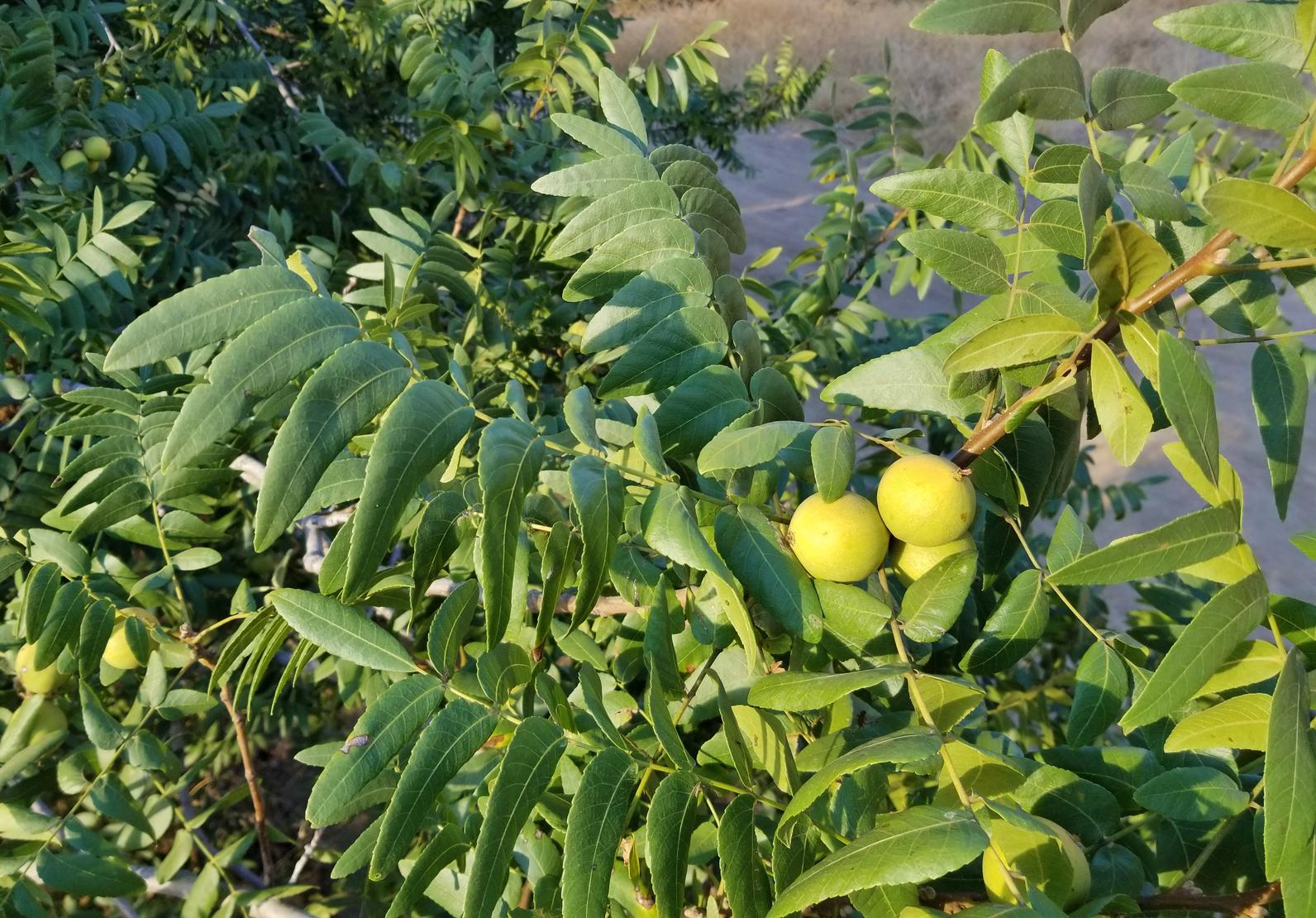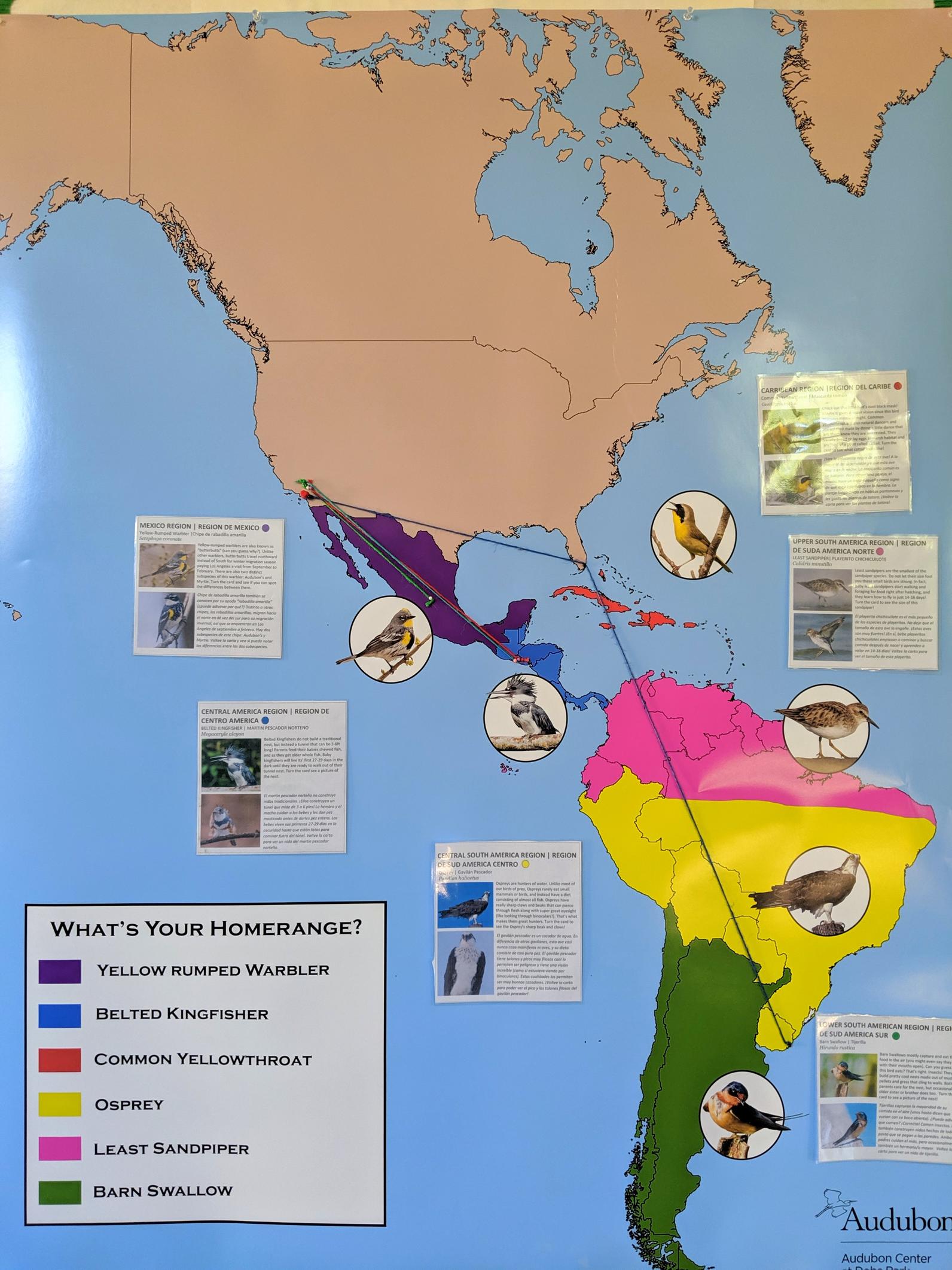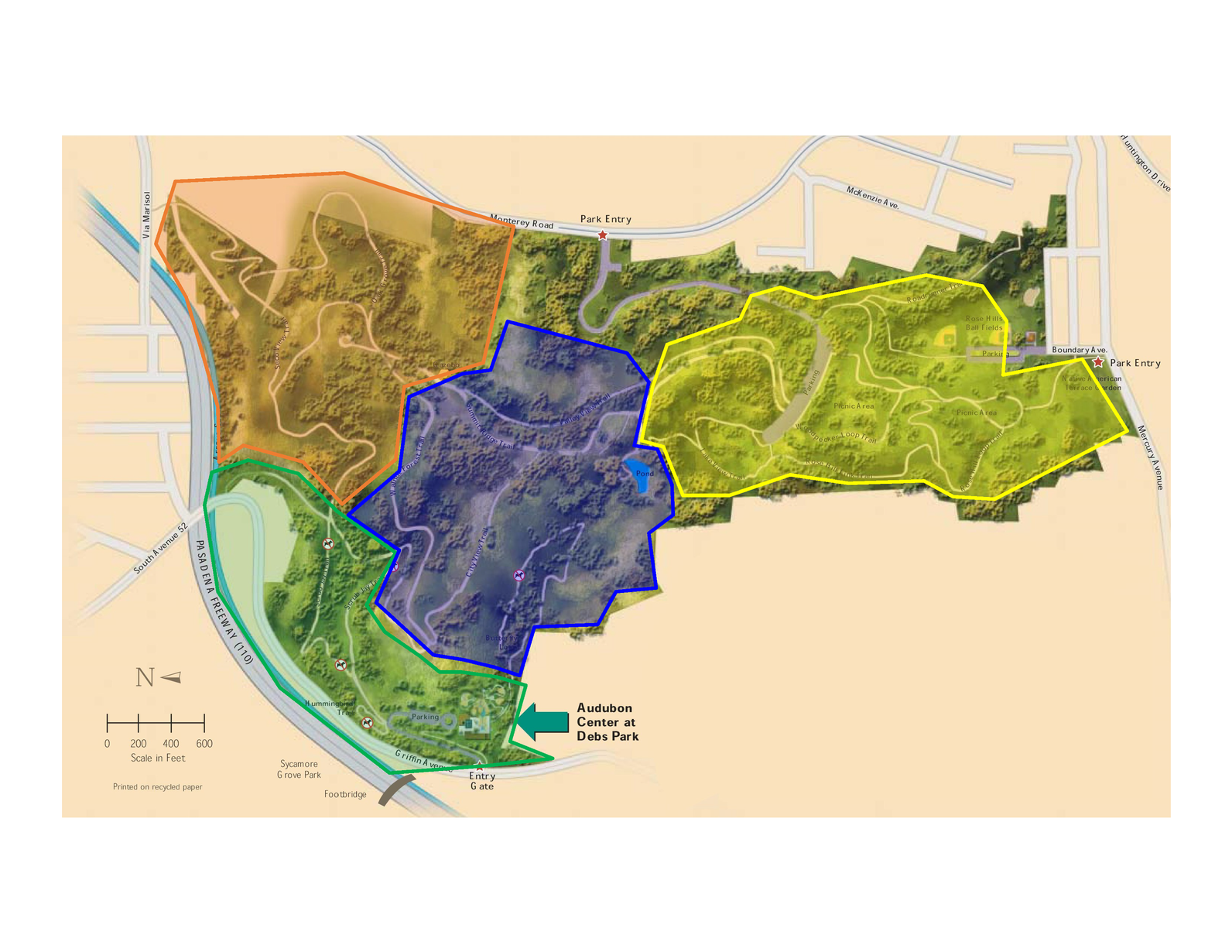
To celebrate, Patagonia has stepped up to support the work we do here at the Audubon Center at Debs Park by matching ALL donations made through Patagonia Action Works between today and December 31st! That means any donations made to the Audubon Center at Debs Park through Patagonia Action Works will DOUBLE this holiday season!
We are always grateful for your support, but when you donate between November 29th and December 31st, you’ll have the opportunity to DOUBLE your impact!
100% of all donations made through Patagonia Action Works will go directly to fund programs at the Audubon Center at Debs Park including:

Habitat Restoration at the Audubon Center at Debs Park. This year, we planted over 1,000 California native plants in Debs Park! These natives do a lot of work – from creating bird-friendly habitat and resources, to protecting the park from dangerous fires, to beautifying the trails. With the help of community volunteers, we’ve been able to continue restoring habitat at Debs for birds and people too!

Our Native Plants for Birds Program has worked to engage local schools to teach them about California native plants! This year, we’ve worked with Sotomayor Learning Academies and Anahuacalmecac International University Prep doing weekly classroom visits to teach students how to grow and plant California natives. Over the summer, our Native Plants for Birds Summer Interns got an even deeper look at how to tend habitat along the LA River!

We continued our work to create bird-friendly communities along the LA River at Steelhead Park, Elysian Valley Gateway Park, and Rattlesnake Park. We even adopted a fourth park – Zev Yaroslavsky LA River Greenway Trail in Studio City!
Community programming including bird walks, rock walks, nature arts + crafts, advocacy workshops, and MORE! Our Center’s mission is to inspire our community to engage with the outdoor world. Our environmental education programs stem from the idea that if we teach visitors about nature and create opportunities for our community to learn about birds, plants, and habitats, you’ll fall in love just as hard as we did!
So DONATE TODAY through Patagonia Action Works and see how far your helping hand can go!

Melody has been volunteering at the front desk on Wednesday mornings since July, and she has been an amazing addition to our volunteer team. She always comes with a great attitude and a willingness to learn. She is a joy to work with and is always ready to do whatever task may be at hand that day. You will typically find her working on data entry, answering the phone, welcoming visitors, and even helping with the occasional snake care! With a background in baking, Melody has delighted the Debs Park team with her delicious baked goods. She has even made jam with the grapes from our California Wild Grape vines! Her favorite part about volunteering at the Center is ”being part of community-minded organization that makes nature easily accessible to all.” She has also really enjoyed learning about the world of birds, and appreciates how much this learning process has opened her eyes to things she may have previously overlooked. We are so grateful for her constant positivity, her dedication, and her continued support of the Center. Next time you’re around the Center on a Wednesday morning, stop by the front office to say hello!

Come check out the Southern California Black Walnuts this month before they go dormant for the winter season. Southern California Black Walnuts have very limited habitat distribution where most of the population resides within Southern California, hence its’ name. Like most California native plants, they go through winter dormancy where they will drop all of their leaves in winter in order to conserve energy. Talking about energy, Southern California Black Walnuts also provide a great energy food source for our local wildlife, but was also a staple food source for the Tongva indigenous community. The black walnuts were consumed for food, but also to make dye and games. It is a common misconception that California doesn’t have seasons, but the Southern California Black Walnut will tell you otherwise. During this month, the trees have a variation of yellow, green, and browns, so come check them out at Debs Park before they are bare for the next couple months.

Another of our winter birds at Debs Park is the White-Crowned Sparrow. Every year, the Debs Park team anxiously awaits the arrival of these species and the Yellow-Rumped Warbler during late September, and by November, both species are everywhere around the park. The White-Crowned Sparrow however is extremely noticeable due to this song that some people even say it sings “I am a white crowned sparrow.” Adult white-crowned sparrows have a distinct white crown with black stripes resulting in their name. Juvenile white-crowns however have a brown crown with beige stripes. Like most sparrows, these birds are seed-eaters and forage on the ground, however you can find them once in a while catching a bug midair. These species, also have five different subspecies, so it is also possible to catch more than one subspecies at the park. Come borrow a pair of our binoculars and see if you can spot them in the park.

In addition to hosting a number of community and volunteer events, a large part of what we do at the Audubon Center at Debs Park involves sharing information about our programs and the impact that they have on our local birds and community. Photography is a powerful tool that we can use to share about our work and engage the broader community in what we do here at the Center. Jim Kuo is a local photographer who has been volunteering with us for almost a year now. He’s played a large role in increasing our ability to effectively share about our events and our programs. Jim is always willing to help and has a great eye for capturing photos that are in line with how we would like to present our work. We appreciate that he goes beyond just taking photos and takes the time to talk and build relationships with the folks that he photographs. You can find Jim’s work across our website and social media, or you can take a look at a selection of his photos HERE. We are so grateful for the time, energy, and photographs that he has generously contributed to the Center. Thank you Jim! There are always opportunities for folks to contribute special skills that they may have - contact mika.perron@audubon.org to find out more information on skilled volunteer opportunities!

Laurel sumac is often called the "taco plant" and if you look at the leaves, you can tell why! It's leaves are long ovals that fold up and into themselves, giving it a pretty distinctive look. Laurel sumac is a plant that can be found in any scrub community and it's really aromatic - it's the perfume of scrub communities!
Laurel sumac's a pretty important plant. Because it is really sensitive to dry climates, avocado and citrus farmers have used it as a "sentinel plant" - informing them of land that would be fruitful. It also provides habitat and food for local birds and butterflies! You can check out laurel sumac along our Children's Woodland! Keep an eye out for a taco leaf plant with reddish brown berries!

Yellow-rumped warblers are also known as "butterbutts" and you can guess why! Unlike other warblers, butterbutts travel northward instead of South for the winter migration season, paying Los Angeles a visit from September to February. There's two distinct subspecies of this warbler - Audubon's and Myrtle's.
Butterbutts are some of our most popular migrants. They're omnivores, feeding on seeds and insects close to the ground. You can spot a Yellow-rumped Warbler from its flight pattern - it flaps flaps flaps and then swoops! Come visit butterbutts and other warblers migrating around Debs during fall migration and see if you can spot some differences between them!

This Saturday October 5th, the Audubon Center at Debs Park held its first Pachanga de las Americas. Our Pachanga – or party – celebrated our community connection to cultures from all across the Americas through dance, music, food, story sharing, and of course, birds!
Between September 15th and October 15th, the United States celebrates “National Hispanic Heritage Month” or “National Latino Heritage Month,” highlighting the incredible contributions the Hispanic and Latino communities have made to the country’s history, heritage, and culture. (Fun fact: Hispanic Heritage Month was actually established through legislation written by Rep. Edward R. Roybal – a fellow Angeleno!) We knew that, as a Center working in Northeast Los Angeles with a majority Latino community, we wanted to do something to celebrate our culture here at the Audubon Center at Debs Park.
Our staff was excited to begin planning an event where we could celebrate our favorite foods, listen to our favorite music, and show off our national dances. During this planning, we learned that the term “Latino” has been used to negate and erase the experience of the Indigenous community not only in the Southwestern United States, but throughout the Americas as a whole. Rather centering this Pachanga around the Latino community, we decided to create a celebration of cultures from all across the Americas!

So how was the Pachanga? Over 150 community members showed up to participate in bird hat making workshops, t-shirt screenprinting, succulent potting, dance workshops, story sharing sessions and more! We were proud to highlight 6 birds that migrate from different regions in Latin America stopping in Los Angeles for a quick break during their migration:
Through these birds, our community mapped their own migration story to Los Angeles and repped their regions through bird hats made at a workshop with Arroyo Arts Collective at the Pachanga de las Americas. It was so cool to walk around the Center and everyone wearing the bird hat that corresponded to their region. There was information on each of these birds such as their migration paths, diet, habitat, and other fun facts to give people an opportunity to connect with their regional bird. We put birds on t-shirts too! Art students from Sotomayor Learning Academy created and printed 4 different t-shirt designs, featuring birds found at the Audubon Center at Debs Park such as the Anna’s Hummingbird, Red-tailed Hawk, Wilson’s Warbler, and the Barn Swallow. Our Pachanga de las Americas was a great opportunity to get some unique bird gear!

An important piece of our Pachanga de las Americas was sharing the stories and traditions of all the different cultures in the Americas – whether it be dance, food, or stories. Throughout our Pachanga, we hosted Story Sharing Sessions with Latino Outdoors where Indigenous and Latino members of our community spoke about their experiences in the conservation movement or in the outdoors. We recorded these stories and we’ll be posting them on our website by the end of the month so that everyone can listen and learn from these experiences. Our Pachanga featured 2 dance performances from across the Americas. These dances are historically used to tell stories. The first was Danza Azteca, from Mexico – it was performed by students from Anahuacalmecac University Prep. We also held a Forro Dance workshop, from Northern Brazil – performed by Andrea Lopasso and Yuki Shimotakahara. Visitors got a chance to learn both Danza Azteca and Forro at our Pachanga – everyone was welcome on the dancefloor!

Other activities included a live birds of prey show presented by Nature of Wildworks, a succulent potting workshop with materials provided by Ponderosa Cactus, and a bird banding game by National Parks Service. There was activities for kids and families of all ages!

Overall, we had a blast at our Pachanga de las Americas! We’re so grateful to all of our partners – Alma Family Services, Latino Outdoors, Arroyo Arts Collective, Mujeres de la Tierra, National Parks Service, Anahuacalmecac University Prep, and Sotomayor Learning Academy. We couldn’t have done it without their incredible collaboration and community outreach. We’d also like to thank La Tehuanita, Ponderosa Cactus, and Maracas Café and Catering for their sponsorship. We loved engaging with our community and sharing cultural traditions with each other, learning about birds and getting down on the dance floor. Latino Heritage Month continues through October 15th, but here at the Audubon Center at Debs Park we celebrate cultures from all over the Americas every day! Interested in participating? Check out upcoming events – including Bilingual Bird Walks and Nature Arts + Crafts Workshops – in our Events page!
Still not ready to stop celebrating Latino Heritage Month? Check out our Pachanga Playlist on Spotify and relive some of the best memories of the day!

On Saturday, September 28th, the Audubon Center at Debs Park participated in the first ever Audubon Bird-Off. The Audubon Bird-Off was a friendly competition across 3 Audubon locations throughout the country to see which area had the most avian biodiversity and was lead by 3 of the Audubon Fund II Apprentices – Tania Romero at the Audubon Center at Debs Park, Jose Santiago at The Discovery Center, and Jason Ward with Atlanta Audubon. The goal for this community science event was simple – count as many birds as possible.
Though the day started out super cloudy, 14 birders joined 4 groups to survey the 282 acres of Ernest E. Debs Park. We started at the Audubon Center at Debs Park’s Courtyard with some pan dulce and coffee, as birders discussed potential sightings, possible migrations, and the birds they anticipated seeing. After a quick rundown of all the area being covered (and potential species sightings) the 4 groups were off – armed with a mission of spotting more birds than our Atlanta and Philadelphia competition.

During the 4 hours participants surveyed the park, we saw a total of 826 birds from 52 species – not bad considering that throughout the year around 140 species of birds can be found at Debs Park! Some of the most interesting finds we had were a flock of American White Pelicans, a Red-Shouldered Hawk, Say’s Phoebes, Oak Titmouse, American Kestrel, Yellow-rumpled Warblers, Red-breasted Sapsucker, Western Wood Peewee, and a Wilson’s Warbler. Check out our full list of sightings below:

It’s clear that fall migrants are starting to stop through Debs Park! We are proud to announce that after all the tallies came in from Audubon Center at Debs Park, Atlanta Audubon Society, and the Discovery Center, the Audubon Center at Debs Park was the winner of the first ever Audubon Bird-Off. We really dusted the competition!

At least there's always next year...If you’re interested in catching these birds in action or learning more about birding in general, we offer Community Bird Walks on the 2nd and 3rd Saturday of every month at the Audubon Center at Debs Park! Interested in birding around the LA River? Check out our events page for an updated list of Bird Walks at the Rio de Los Angeles State Parks!
Audubon Center at Debs Park is located at 4700 Griffin Ave, Los Angeles, CA 90031
Center Hours:
Trail Hours:
You can help us continue to deliver this outstanding programming to the Los Angeles area by making a generous gift today. Thank you!